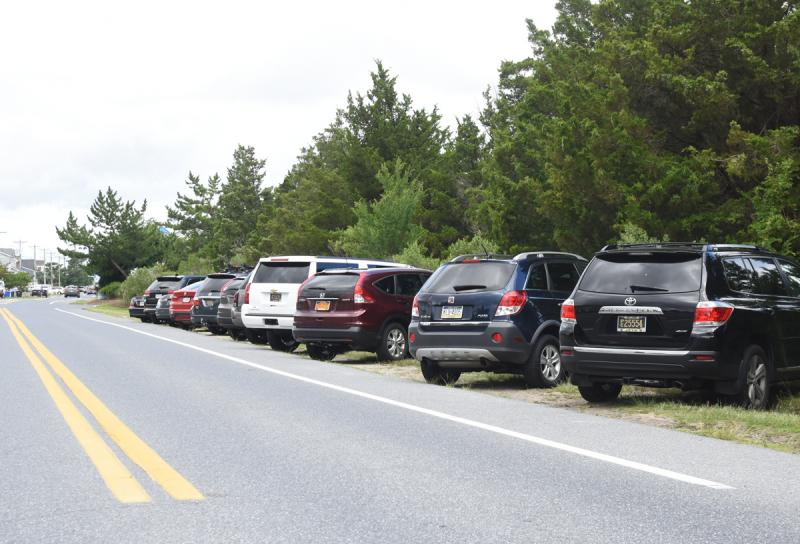Minor changes are coming for Lewes Beach parking this summer.
Lewes Mayor and City Council approved several recommendations at its Jan. 14 meeting. All changes, developed over 10 meetings by the beach parking review committee, are aimed to improve safety and behavior on the beach.
The most notable change will be designated parking spaces in front of Children’s Beach House and Lewes Yacht Club along Cedar Street and a small section of Maine Avenue. By having delineated spaces, committee Chair Deputy Mayor Fred Beaufait said, vehicles will be more organized, which could result in more parking.
City officials will also seek to mark parking spaces in the stone lot at Roosevelt Inlet. The lot is owned by the Department of Natural Resources and Environmental Control and any decision on changes to the lot is subject to DNREC approval.
A common issue on the beach is visitors parking in front of mailboxes and driveways. To remedy that problem, council approved a recommendation to more clearly designate parking spaces along the residential streets between Cedar Street and Bay Avenue.
The goal is to eventually determine where all of the available parking is located on the beach. The first step will be a survey of all the bayside residential streets between Roosevelt Inlet and Savannah Road.
“One of the basic problems we have is that the streets are not always in the middle of the right of way,” Beaufait said. “In some cases, you have 5 feet on one side and 25 feet on the other.”
The city needs to know the exact boundaries of its rights of way to determine if residents need to remove obstructions to allow for more parking. Beaufait has said previously that the city likely will not force residents to remove every obstruction found on their property.
The survey is estimated to cost $10,000 to $15,000, and it will be budgeted in the upcoming fiscal year beginning April 1.
The beach parking committee heard several complaints from Lewes Beach residents regarding the behavior of visitors. One issue involved people playing on the dunes and others using the dune as a bathroom.
To protect the dune, council agreed to add dune fencing and more signage in appropriate locations between Roosevelt Inlet and the main beach at Savannah Road. Council also plans to increase police presence on the beach during the summer season to educate visitors and discourage them from entering the dune area.
Similarly, council will also task the police department to beef up patrols on the residential streets between Savannah Road and Roosevelt Inlet in response to comments received about visitors changing out of swim suits in plain view, dumping trash and diapers on the side of the street and acting inappropriately.
Council agreed with the committee’s recommendation not to move forward with parking permits, expanded parking at the two public parking lots or new crosswalks on Cedar Street.
The only recommendation not voted on at the Jan. 14 meeting was a proposal to enforce an agreement the city signed with the Department of Transportation in 1977 requiring 30 feet clear of vehicles on all roads intersecting Cedar Street.
“When is the last time we enforced that?” asked Councilwoman Bonnie Osler. “It sounds to me like the loss of parking spaces on the beach would be in excess of 60. That’s a lot of parking spaces.”
Councilman Dennis Reardon, a beach resident, agreed.
“I didn’t think about that,” he said. “There’s about 22 streets over there. For each street onto Cedar, you’re probably going to lose three spaces on each side. That’s an awful lot of parking spaces to lose.”
Council agreed to revisit the agreement with DelDOT and renegotiate the terms if possible.
Nick Roth is the news editor. He has been with the Cape Gazette since 2012, previously covering town beats in Milton and Lewes. In addition to serving on the editorial board and handling page layout, Nick is responsible for the weekly Delaware History in Photographs feature and enjoys writing stories about the Cape Region’s history. Prior to the Cape Gazette, Nick worked for the Delmarva Media Group, including the Delaware Wave, Delaware Coast Press and Salisbury Daily Times. He also contributed to The News Journal. Originally from Boyertown, Pa., Nick attended Shippensburg University in central Pennsylvania, graduating in 2007 with a bachelor’s degree in journalism. He’s won several MDDC awards during his career for both writing and photography. In his free time, he enjoys golfing, going to the beach with his family and cheering for Philadelphia sports teams.























































